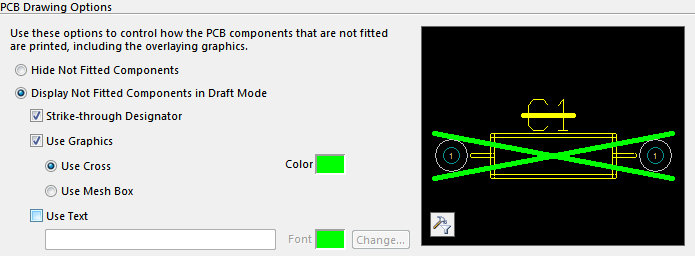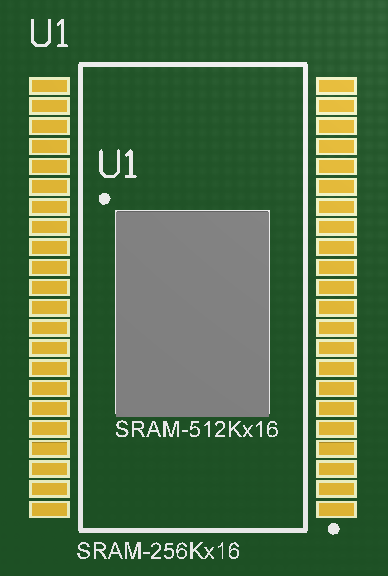True Variants Enhancements
This document is no longer available beyond version 15.1. Information can now be found here: Design Variants for version 24
Main article: Design Variants
A key feature in the introduction of True Variants was the ability to select a different component (alternate part) that uses a different footprint. Both footprints are transferred to the PCB during design synchronization, and both must be placed on the PCB, even though only one would ever be fitted. This release sees a number of enhancments to support this capability, as outlined below.
Design Rule Checking of Stacked Components
Design rule checking support for stacked alternate components - because alternate parts share the same UID, the software is aware that they are alternate parts and can prevent the rules engine flagging stacked or overlapping alternate-part footprints.
The BGA has been placed within the TSOP, because they are
alternate parts no extra rules are required to allow this.
PCB Re-Annotation
Performing a PCB re-annotation is a popular requirement for many designers, to ensure that components can easily be located on the board. This release sees the introduction of support for alternate parts, like all other components, the alternate parts have their designators re-assigned when a positional re-annotation is performed, but the alternate parts still have the same designator as each other. These annotation changes can be pushed back to the schematic.
Variant Output Generation
Output generation, such as PCB assemly drawings, now supports the presence of Fitted/Not Fitted and Alternate Parts. Configure the display of Fitted/Not Fitted parts in the PCB Drawing Options section of the Variant Options dialog.

Not Fitted components can be hidden or shown in draft mode, with a variety of notation options.
Database-Linked Variants and BOM Generation
A powerful feature available during output BOM generation is the ability to include additional parameters, or update existing parameter values, from a connected database.
There are two ways component databases can be used with your project: either via an Altium Database Library (*.DBLib) document, which can effectively present each database record as a component; or via an Altium Database Link (*.DbLink) document, which when queried, can return database parameter values when a matched record is located. Database linkage and updating can occur during the design process, and it can also occur during BOM generation.
The BOM generation dialog includes two options for updating parameter values during BOM generation. These options behave as follows:
- Include Parameters from Database - Include (make available) parameter value from the referenced database, which will override the current schematic parameter values with the database values.
- Include in Component Variations - also include these database parameter value overrides in the component variations.

